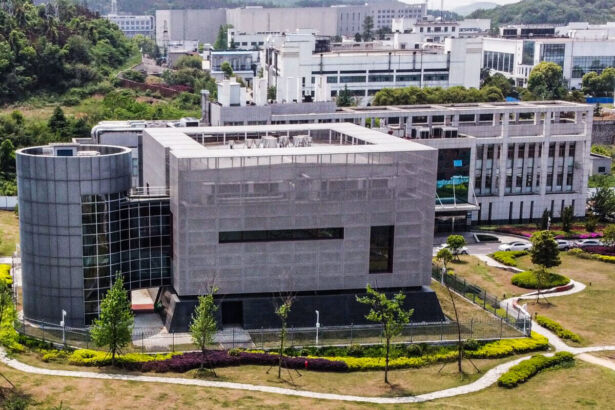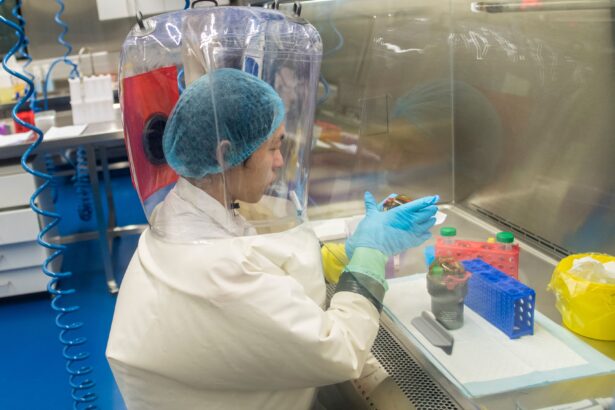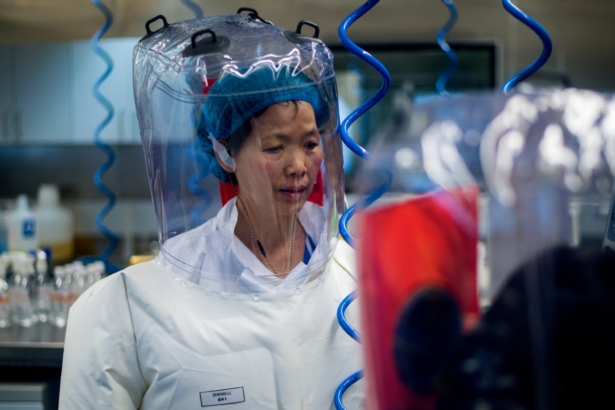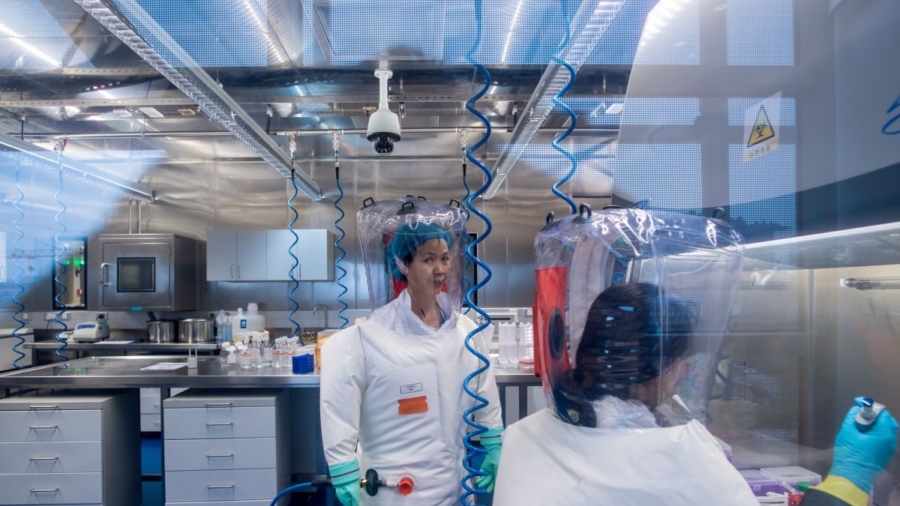A doctor working for the U.S. government visited in 2017 the China-based virus research facility where the pathogen that causes COVID-19 may have leaked from and sounded the alarm on safety issues at the lab earlier than previously reported, according to documents obtained by The Epoch Times.
Dr. Ping Chen, who worked for the National Institute of Allergy and Infectious Diseases (NIAID), visited the Wuhan Institute of Virology (WIV) in October 2017 and prepared a report for her superiors after her visit.
A version of her report obtained by a Freedom of Information Act (FOIA) request was fully redacted, but Sen. Ron Johnson (R-Wis.) and his team were granted an opportunity to carry out an in-camera review of the report that had some of the redactions removed.
“It is clear to me by talking to the technician that certainly there is a need for training support” at the Wuhan lab, Dr. Chen wrote in the report, parts of which were attached to a letter sent by Mr. Johnson to Department of Health and Human Services (HHS) Secretary Xavier Becerra on Sept. 21.
The letter, which was obtained by The Epoch Times, includes fragments of Dr. Chen’s report and suggests that HHS and the U.S. National Institutes of Health (NIH) were aware of safety issues at the Wuhan facility as early as October 2017.

Earlier reporting based on two State Department cables and correspondence records obtained by Judicial Watch indicate that NIH was made aware of safety problems at the Wuhan lab in 2018, which is later than Dr. Chen’s report.
“I think the institute would welcome any help and technical support by NIAID,” Dr. Chen wrote in her 2017 report.
Mr. Johnson said in his letter to Mr. Becerra that Dr. Chen’s 2017 report partially served as the basis for a Jan. 19, 2018, State Department cable that raised safety concerns about the Wuhan virus lab.
The Wuhan facility is where evidence suggests that SARS-CoV-2, the virus that causes COVID-19, leaked from before spreading like wildfire across the world. According to the so-called lab leak theory, the deadly pathogen that caused the pandemic escaped the Chinese facility, where risky gain-of-function research on bat coronaviruses was being done that was partially funded by U.S. taxpayer dollars.

Demands
Mr. Johnson demanded that HHS provide a version of Dr. Chen’s 2017 report that contains fewer redactions in order to scrutinize its contents more closely and determine how closely it aligned with the cable.
“In the public FOIA document, HHS redacted Dr. Chen’s entire report claiming that it contains privacy and deliberative information,” Mr. Johnson wrote.
“It seems apparent that the only reason that HHS redacted this information was to hide the report’s contents from the American people. Perhaps HHS did not want the public to fully understand the fact that NIH and NIAID officials were aware of safety concerns at the WIV dating as far back as 2017,” he added.
Mr. Johnson also accused NIH and HHS of obstructing his probe.
“HHS and NIH continue to obstruct my oversight efforts,” he wrote. “It is unacceptable that HHS and NIH had Dr. Chen’s report in its possession and only provided a slightly-less redacted version for my staff to review in camera.”
He demanded that HHS provide unredacted copies of Dr. Chen’s report, as well as all documents and communications relating to the report and to the Wuhan lab.
Mr. Johnson also asked for Dr. Chen to sit before a congressional panel and testify.
He set an Oct. 5 deadline for HHS to comply with his request.
HHS did not immediately respond to a request for comment for this story from The Epoch Times.

‘Preponderance of Evidence’ for Lab Leak
In August 2021, a report by Republican lawmakers noted a “preponderance of evidence” for the theory that the virus that caused the COVID-19 pandemic leaked from the Wuhan lab.
Chinese officials have denied the lab leak claim, insisting that the virus made a natural jump from animals to humans.
U.S. intelligence agencies later said in a report that a natural origin and a lab leak are both plausible hypotheses as to the origin of the COVID-19 pandemic, but that a lack of evidence makes a definitive conclusion either way impossible.
It’s a sentiment echoed by Mr. McCaul in his testimony.
“Unfortunately, we may never know for certain because the Chinese Communist Party went to great lengths to cover up this outbreak,” he said. “They detained the doctors in order to silence them. They disappeared journalists. They destroyed lab samples. They hid the fact there was clear evidence of human-to-human transmission. And they have refused to allow a real investigation into the origins.”
Wuhan Lab Funding Controversy
The U.S. Agency for International Development (USAID) awarded a total of $1.1 million to the Wuhan Institute of Virology (WIV) between October 2009 and May 2019, the agency wrote in a May 2021 letter (pdf) to Rep. Guy Reschenthaler (R-Pa.).
The agency said the funds were channeled through EcoHealth Alliance and were meant for the purpose of advancing research on critical viruses that could pose a threat to humans. It also denied claims that the money was used for gain-of-function research, which seeks to boost viral lethality.
In June 2022, the House Appropriations Committee approved a ban on sending any further funding to the Wuhan Institute of Virology.
More recently, the NIH quietly removed the WIV from a list of foreign facilities that are eligible to receive U.S. taxpayer funds to conduct animal experiments.
From The Epoch Times


